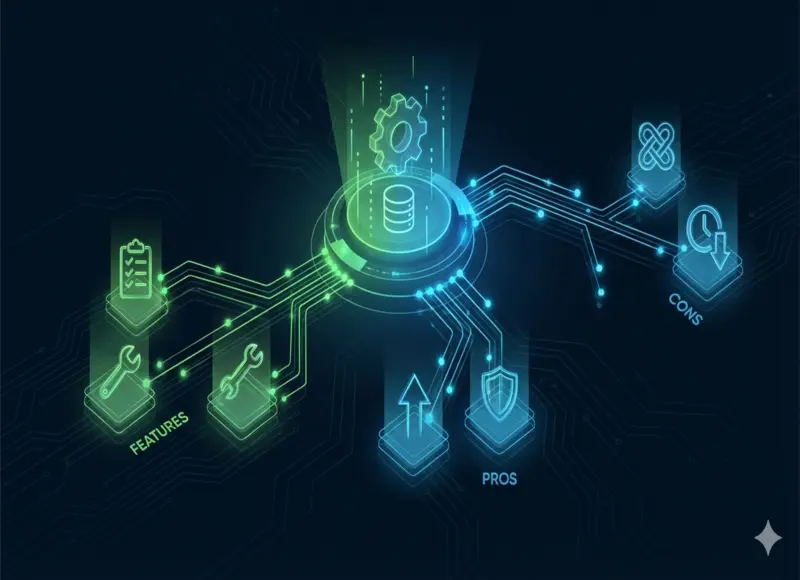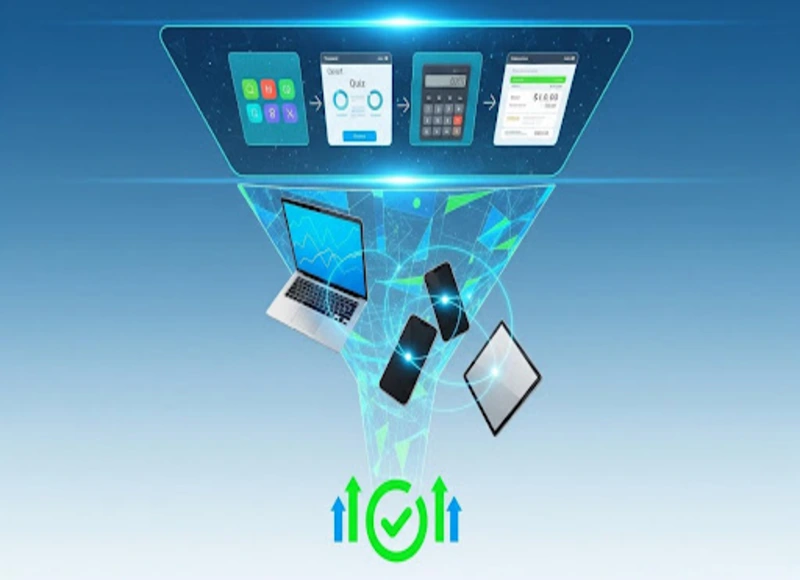Table of Contents
Understand the significance of strategic IT planning for sustainable growth. Gain valuable insights on aligning technology with your long-term business vision.

Businesses these days depend on technology. But simply having the latest gadgets isn't enough. Companies will require a proper route to apply these technologies to achieve their goals and objectives. That is what strategic information technology planning does. It helps organizations make better choices regarding technology investments and their practical uses.
Let us dive into the reasons why this is important for long-term success.
What Is Strategic IT Planning?
Strategic IT planning generally refers to ensuring that your technology strategy and decisions are related to broader business objectives. This approach is more complex than merely buying a few new computers or software packages. For this reason, business owners and companies outsource strategic IT planning to experts.
Strategic IT planning is a deliberate method that addresses the broader perspective. It guides the following key activities:
- Review good technology capabilities
- Plan for future tech capabilities
- Define objectives
- Develop a roadmap of how to meet those objectives
Think of this as planning a road trip: You have to know where you're starting from, where you're going, and how to get there. Strategic IT planning does the same for a company's tech journey.
For example, as an e-commerce business scales up, it will realize the need for better inventory management software to sustain market demand. All such activities, like looking for options, budgeting, and training workers on the new system, would form part of its strategic IT plan.
Why Is It Important?
Strategic IT planning offers numerous benefits that can significantly impact a company's success. Let's discuss some of its key benefits.
Saves Money in the Long Run
Smart IT planning is a preventative measure to ensure businesses don't succumb to costly mistakes. Without a plan, companies can sink money into unnecessary tech or systems that fail to mesh well with each other.
Consider a small marketing firm that invests in high-priced design software for each employee only to find out later that most staff members need only basic features. A project proposal example outlining software needs and budget considerations could have helped prevent this mistake.
Improves Efficiency
The strategic choice and application of tech tools dramatically boost productivity. Employees waste less time struggling with older systems and more time getting actual work done. For instance, institutions like STVT campuses implement technology planning to enhance both student experiences and administrative efficiency, demonstrating the real-world impact of aligning IT investments with organizational goals.
A law firm, for example, can invest in document management software. The hours spent searching for files will allow lawyers to provide better legal services to their clients.
Improves Competitiveness
Companies with solid IT strategies are more agile to market change and can leverage newer technologies to improve their competitiveness.
A retail chain with a strong IT plan will be more likely and quicker to deploy a new mobile app to customers, thus keeping them ahead of their competition, which has not adapted to new technology as quickly.
Supports Growth
As businesses grow, their tech needs change. Strategic planning helps ensure a company's technology can scale up smoothly to support growth.
A startup could start with basic cloud storage, but its IT strategy would include strategic IT plans to upgrade systems as it added more people and data.
Facilitates Better Decision Making
Effective IT planning allows for better data and analytics tools, which help enable much more informed business decisions from each department.
For example, a restaurant chain could use data from its point-of-sale system to analyze which menu items are most popular at different locations, helping it optimize its offerings.
Key Components of Strategic IT Planning
Effective strategic IT planning involves several crucial elements to create a comprehensive approach. Let's break down these key components.
Current State Assessment
Plans can be made only after an understanding of the current IT landscape. This means drawing up a proper inventory of all hardware, software, and systems currently in use.
Questions to be asked include:
- What technology do we have today?
- How well is it performing?
- Where are the gaps or pain areas?
This evaluation enables the discovery of shortcomings and serves as a base for future strategies.
Clearly Define the Objectives
The second step is determining what a company desires to accomplish using technology. These goals must closely relate to business objectives.
Examples may include:
- Enhancing customer service response time
- Enhancing security for the data
- Optimizing the supply chain
These clearly defined objectives can set parameters for all future decisions and tech investments.
Develop a Roadmap
Once objectives have been identified, the next step would be to develop a roadmap for achieving them. This policy should include:
- Specific projects or initiatives
- Timelines for execution
- Resources required (budget, personnel, etc.)
- Success metrics
A roadmap keeps everything on track and focused on the most critical priorities.
Budgeting and Resource Allocation
Financial strategy should be considered in IT planning. This is not just in terms of the upfront cost of the new tech but also the associated ongoing costs that may be incurred in terms of maintenance, training, and upgrading.
Proper planning ensures that money spent on IT is within the company's budget and priority areas. Businesses can also leverage financial planning consulting services to optimize resource allocation and assess the financial impact of outsourcing IT functions. It also helps in critical decision-making, e.g., deciding not to build but to outsource some IT functions.
Risk Management
Every technology decision does not come devoid of risks. Good strategic planning involves foreseeing risks and putting measures in place to minimize them.
Some common IT risks include:
- Data breaches
- Systems failures
- Compatibility issues between different technologies
By anticipating these risks, companies can implement safeguards and develop contingency plans.
Continuous Review and Adaption
Technology and business needs are always changing. That's why strategic IT planning isn't a one-time event. It requires ongoing review and adjustment.
Regular check-ins ensure the IT strategy is on track and aligned with the business goals. These check-ins also provide an opportunity to 'course correct' in case some initiatives are not going as planned. An effective IT asset tracking software solution can further streamline this process by offering real-time visibility and control over IT assets.
Challenges of Strategic IT Planning
Even though strategic IT planning has many advantages, it has some drawbacks. Many organizations encounter various challenges in formulating and attempting to execute their IT strategy. Such challenges include the following:
Keeping Up with Rapid Tech Changes
The tech world moves fast. New tools and trends emerge constantly, making long-term planning challenging. Strategic planners must stay informed about emerging technologies and be cautious about jumping on every new trend.
Balancing Short-Term Needs with Long-Term Goals
There's often pressure to address immediate IT issues, like fixing bugs or replacing outdated hardware. However, focusing too much on these short-term needs can derail long-term strategic initiatives. Finding the right balance is crucial.
Gaining Buy-in From Leadership
In some cases, top management often does not conceive the need to act on strategic IT planning. Instead, information technology is taken as a cost centre rather than a strategic asset. Overcoming this mindset and getting the top management to approach and support the implementation is crucial to success.
Managing Resistance to Change
New technologies usually change the way people work. There may be resistance to the changes, especially by employees who like to work with known systems and processes. Sound change management practices are an important component of effective IT planning.
Measuring ROI
Some IT programs, especially those with long-term intangible benefits, are difficult to measure in terms of return on investment. An IT strategist must continue to create clear metrics and demonstrate value.
Effective Best Practices in Strategic IT Planning
Organizations can follow several best practices to maximize the benefits of strategic IT planning and overcome common challenges. These strategies ensure that IT planning efforts are thorough, effective, and aligned with business goals.
Involve All the Stakeholders
IT decisions should involve representatives from all departments within a company since they affect every person. This ensures that all needs are considered and there is wider acceptance within the company.
Stay Agile
While having a plan is important, it's also important to remain flexible. Tech landscapes change fast, and new opportunities or challenges can emerge out of nowhere. The closest to perfect strategic plans leave room for flexibility and afford quick, nimble pivots in times of need.
It's All About the Business Outcome, Not Just the Technology
It's easy to get swept up in the excitement of new tech. But every IT decision must be grounded in how it will benefit your business. Always ask yourself, 'How do we drive our goals with this?'
Focus on Security and Compliance
With rapidly growing cyber threats and data privacy regulations, security should precede any IT strategy. The strategy should have security considerations embedded in it at each level of the plan, not as a one-off measure.
Invest in Training and Skill Development
New tech is only helpful if people know how to use it effectively. Factor in time and resources for training employees on new systems and keeping their skills up to date.
Consider Sustainability
As environmental concerns grow, consider the environmental impact of IT decisions. It might involve choosing energy-efficient hardware or implementing policies to reduce e-waste.
Plan for Integration
Very different systems have to be seamlessly combined. When planning technology projects or initiatives, remember how they integrate with existing systems and workflows.
FAQs:
Q: What is strategic IT planning?
A: Strategic IT planning aligns a company's technology decisions with its business goals. It involves assessing current capabilities, identifying future needs, setting clear objectives, and creating a roadmap to reach those objectives.
Q: How often should a company review its IT strategy?
A: Companies should review their IT strategy regularly, typically at least once a year. However, more frequent reviews may be necessary in rapidly changing industries or during periods of significant company growth.
Q: Can small businesses benefit from strategic IT planning?
A: Absolutely. While the scale may differ, small businesses can greatly benefit from strategic IT planning. It helps them make smart tech investments, improve efficiency, and prepare for growth.
Q: What's the difference between IT strategy and IT operations?
A: IT strategy focuses on long-term planning and aligning technology with business goals. On the other hand, IT operations deal with the day-to-day management of IT systems and services.
Q: How can a company measure the success of its IT strategy?
A: Success can be measured through various metrics, including return on investment (ROI), improved efficiency, reduced downtime, enhanced customer satisfaction, and progress towards specific business goals outlined in the strategy.
Q: Who should be involved in creating an IT strategy?
A: While IT leadership typically drives the process, input should be gathered from various stakeholders across the organization, including executives, department heads, and IT system end-users.
Q: What are some common mistakes in IT strategic planning?
A: Common mistakes include focusing too much on technology rather than business outcomes, failing to align with overall business strategy, neglecting to involve key stakeholders, and not building in enough flexibility to adapt to changes.
Conclusion
Strategic IT planning is more than a technical exercise; it is a core business practice that must drive growth, efficiency, and competitive advantage in organizations. Companies driving more innovative investments with technology decisions aligned to business goals use technology more effectively to run their businesses better. In a world where technology plays an ever-increasing part in business success, strategic IT planning is helpful and paramount.
Recent Blogs
Stop Building from Scratch: Boost Your Marketing Funnel with App Templates
-
13 Jan 2026
-
10 Min
-
173








